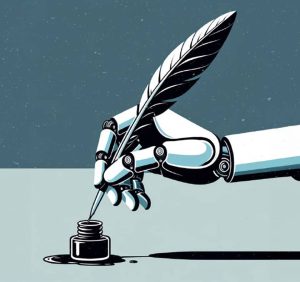The abundance agenda is coming – we all need to get ready
“It can go that way, like, quite luxury, but it can also be so, like, trashy. Just, like, a pack of cigs, and, like, a Bic lighter, and, like, a strappy white top. With no bra. That’s, like, kind of all you need.”
With this pithy oratory, singer songwriter Charli XCX defined ‘Brat’, the title of her platinum-selling album and the cultural meme that defined last summer. As with all trends, brands and influencers rushed to leverage it. Balenciaga released a ‘Brat’ range, AirBaltic rebranded to ‘Airbrat’, and, infamously, the campaign of Presidential nominee Kamala Harris embraced the Brat aesthetic, even winning the approval of Charli.
But Brat summer turned to autumn, and Donald Trump won the White House again. At the time, most dismissed Brat’s politicisation as just another vacuous act by a weak Democratic candidate. But it represented a deeper cultural moment. Brat’s messy, numbing and nostalgic party culture was escapism and symptomatic of a progressive, millennial politics which failed. Austerity, Brexit, Trump, the climate crisis, falling real wages, unaffordable housing, and the disappointment of Jeremy Corbyn and Bernie Sanders – it’s no wonder young people thought the apple was “rotten right to the core” and wanted to be “unburdened by what has been.” But Brat was pure fantasy.
Abundance by Derek Thompson and Ezra Klein charts a new way forward. Pragmatic, hopeful, and material rather than materialistic, the abundance agenda tells progressives that “to have more of the future we want, we need to build and invent more of what we need.” Focusing on housing, transport, energy or healthcare, the authors call for a “liberalism that builds” rather than blocks, imagining a future beyond “chosen scarcities.” Thompson and Klein lament excessive environmental regulation, paperwork wasting scientists’ time, and “everything bagel liberalism” requiring every project to further every progressive cause. The case is as compelling in Europe as it is in the authors’ American homeland. A civil servant friend in the Department of Transport told me a road they were working on was delayed because no DEI assessment had taken place.
The authors position Abundance as a revival of Franklin Roosevelt’s New Deal, but its language builds on a rich tradition of socialist utopianism. Britain’s Aaron Bastani wrote Fully Automated Luxury Communism in 2018, the 20th century’s pre-eminent anarchist, Murray Bookchin, penned Post-Scarcity Anarchism, UK Prime Minister Harold Wilson promised to unleash “the white heat of technology” in a 1963 speech, and Joseph Stalin’s 5-year plans were an ambitious attempt to build and industrialise. Further back, Edward Bellemy’s 1888 novel Looking Backwards imagined a society akin to that created by automation described by Karl Marx in Grundrisse.
Abundance also taps into very modern discourse. It owes much to the libertarian ‘progress’ advocates such as Tyler Cowen and Alec Stapp, techno-optimists in Silicon Valley, a term coined by Marc Andreessen, data-driven climate pragmatists like Hannah Ritchie, and statist economists like Mariana ‘mission economy’ Mazzucato. Although these camps disagree about the role of the state, they’re united by positive visions of the future and a ‘can do’, outcome-oriented approach to politics.
This broad movement faces challengers from all directions. The populist Right’s desire to close borders to goods, services and people prioritises scarcity, many Leftists believe degrowth economics is the only solution to the climate crisis, and Liberals’ identity politics, where the grievances of every minority must be accounted for, may prove incompatible with transcending missions. But the abundance agenda has the momentum in elite circles, spurred partly by a desire to keep up with – and potentially emulate – China.
It’s already entering the mainstream. Harris embraced YIMBYism by pledging to build 3 million homes, but it wasn’t her central pitch. Keir Starmer is coming closer, declaring growth as his government’s North Star. But as he’s discovering, growth is intangible and a tough sell. If voters are to buy into abundance, they need to trust politicians’ competence to deliver big projects and believe that it will benefit them (unlike globalisation which arguably suppressed real wages in developed countries). To reach a wider audience, the abundance agenda’s messaging also needs to go from technocratic to “sunlit uplands” so that the vibe can shift from Brat’s ghosts of decadence to a credible cornucopia.
The abundance agenda is coming, and businesses need to prepare. For organisations clearly aligned with the movement’s goals – be that building infrastructure or deploying new technology – there’s an opportunity to go all in. For most, a balancing act makes sense. Engage to avoid looking outdated but don’t claim more than you can deliver and lose credibility.
It also pays to be aware of who you’re talking to. ‘Abundance’, ‘progress’, and ‘missions’ may tug at the heartstrings of hyper-online politicians, but they will leave consumers cold. Know how to sell the future to your stakeholders.
Some businesses are particularly exposed. Professional services firms specialising in making government projects as complicated as possible need to outline the value of their work – fast. Other businesses may consciously rail against abundance, making a virtue out of ‘boutique’ (scarce and expensive) services. But swimming against the tide carries risks.
The inevitable crushing unpopularity of Trump’s presidency has started the race to own whatever the alternative is. There’s a very real chance the abundance agenda wins. With so much of culture downstream from policy, expect a vibe shift.
Brat was so 2024. It’s time to get your brand abundance-summer ready.







